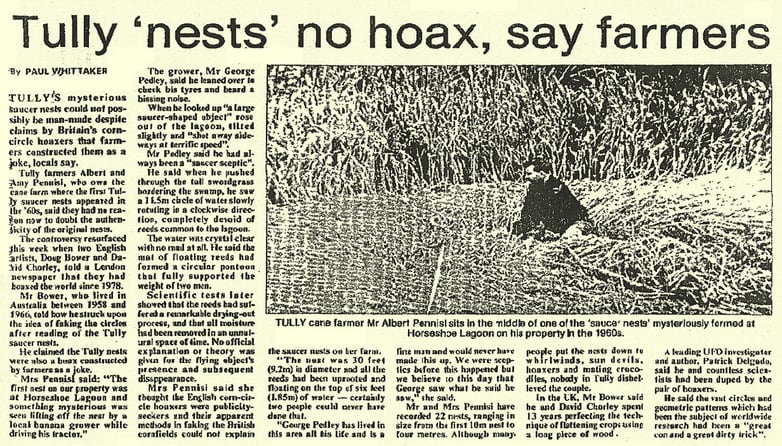The Gosford glyphs, debunked

If someone asked where you’d most likely find a secret cache of Egyptian rock carvings, the answer would probably be North Africa. Right?
I also imagine one of the the last places most people would expect to find such relics would be Brisbane Water National Park, near Gosford on the New South Wales Central Coast. But that’s where, in a natural crypt formed by two 3.5m-high vertical sandstone walls, more than 300 symbols depicting Egyptian gods, chickens, bees and many other more unusual representations are carved into a rock face.
How did they get there? One popular theory is they’re the handiwork of Egyptian travellers who sailed to Australia some 5000 years ago, and after being shipwrecked, engraved their story into stone here. Is there any substance to this claim? Of course not! “The engravings are something we became aware of in the early 1980s, which is around the time the majority were thought to have been made,” reports a NSW National Parks and Wildlife Service spokesperson.
Academics, too, have dismissed the glyphs as a hoax. “I’d be the first person who’d welcome some sort of link because it would make my subject relevant to Australian history,” Associate Professor Boyo Ockinga from the Macquarie University Department of Ancient History told ABC News. “It’d be wonderful…but I’m afraid it’s just not possible.”
He branded the glyphs fakes. “Symbols from Egyptian eras thousands of years apart have been grouped together,” he explained. “There’s a chronological discrepancy.”
So who did carve them? Your myth-busting columnist sides with the professor, and a host of other sceptics, that the first of the engravings was likely made in the early to mid-1920s, when there was widespread interest in ancient Egypt after the discovery of Tutankhamun’s tomb.
Despite overwhelming evidence of an elaborate hoax, there continues to be widespread interest in the so-called hieroglyphs, with many curious visitors flocking to the site each year. And no matter the sandstone carvings’ true origins, as you clamber over moss-covered boulders and squeeze Indiana Jones-style between dark, damp crevices while searching the labyrinth of rocky outcrops for the entrance to the natural crypt, it’s hard to believe you’re only a 30-minute walk from suburbia. It’s a real urban adventure.
Seafaring Egyptian calling cards aside, a visit to Brisbane Water NP is rewarding for its variety of wildflowers such as waratahs, flannel flowers and Sydney boronia. Oh, and I’d suggest for most budding naturalists, the chance to spot a rare spotted-tailed quoll, glossy black-cockatoo or powerful owl is far more alluring than phoney carvings.
For the record, the penalty for defacing natural stone surfaces in NSW national parks can range from $300 to $10,000, depending on location and the nature of the defacement. Definitely debunked!



